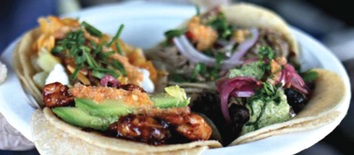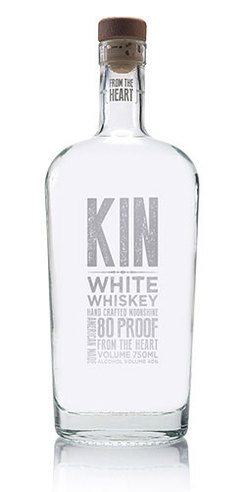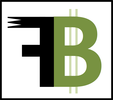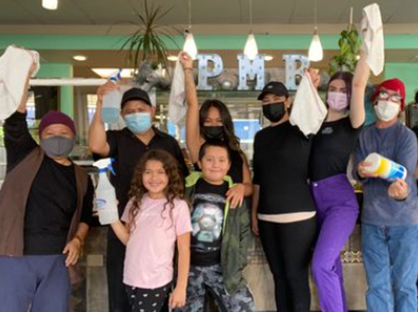|
The California Restaurant Foundation (CRF), in association with the California Restaurant Association, has awarded 318 restaurant owners and operators with grants of $3,500 as part of the Restaurants Care Resilience Fund. Grant recipients will also receive year-long support services including peer-to-peer mentorship and educational learning opportunities designed to equip them with the tools they need to lead their restaurant to long-term success. “We hope this is a way for the recipients to come out of the pandemic better than they were before it took place,” said Alycia Harshfield, Executive Director of the CRF. “We want to alleviate some of their payroll expenses and allow restaurants to bring back their staff. This allows them to make up for other expenses they’ve had to incur such as PPE and retrofitting parking lots for outdoor dining.” Of the 318 grant recipients, 65% are female restaurant owners and 83% identify as people of color. More than 130 grants were given in Los Angeles County, 77 in San Diego County, 62 in San Francisco and Alameda Counties, 29 in Sacramento and San Joaquin Counties and 18 in Fresno and Kern Counties. To qualify, the restaurants had to be single-unit, employ fewer than 50 staff members, be currently open and have experienced a revenue loss of at least 20% from 2019-2020. The grants also come with a year-long support program, where recipients join together virtually to engage in monthly educational learning opportunities, as well as share best practices to improve all aspects of their business. “We hope this is a way for the recipients to come out of the pandemic better than they were before it took place,” Harshfield said. “For example, this month we’re bringing in a legal expert to talk to them about what businesses need to know about reopening post-pandemic. We have others talking about menu engineering, marketing and legislative issues. We leave time at the end of each discussion for restaurants to talk to each other on the zoom meeting, and also spotlight one restaurant each month.” Harshfield led the CRF to launch the Restaurant Resilience Fund in March, partnering with SoCalGas, Pacific Gas and Electric Company (PG&E) and San Diego Gas and Electric (SDG&E), who collectively donated $1.25 million to fund the grants. Wells Fargo provided an additional $250,000 donation, bringing the program’s total to $1.5 million. Utility companies may not be the first source people would look to for securing restaurant grants, but Harshfield noted that symbiotic relationship between the two entities. Restaurants require utilities to operate and make up a large portion of their business, and the utility companies have aided in restaurant support programs long before the pandemic hit. “SoCal Gas has been supportive of our foundation’s High School Programs and our Restaurants Care Relief Fund over the years,” Harshfield said. “Their customers are restaurants and they have a first-hand view on what these customers have faced. They’ve provided programming of their own, such as rebates, and this was a natural evolution of what they were doing with us already.” The CRF’s impact on California restaurants spans far beyond pandemic-related grants. Founded in 1981, the organization’s mission is to invest in and support the future and current workforce of the foodservice industry. The CRF focuses on three pillars: high school culinary arts education, college and training scholarships, and financial safety nets for working professionals. “We see it as our opportunity to help train and recruit future industry leaders, to support those going to college, and to support hose currently in foodservice,” Harshfield said. “We’re here to serve those who serve, and seek to create a thriving restaurant community in California.” The Restaurants Care Resilience Fund was launched in 2017. Designed as a relief fund for F&B workers facing unforeseen crises, the program has provided financial support services for more than 1600 restaurant staff. The Restaurants Care Resilience Fund has helped restaurant workers through everything from illness and deaths in the family to wildfires, and now a global pandemic. “The pandemic has exposed vulnerabilities that we never really anticipated. People never would’ve guessed that the government could just close down your business,” Harshfield said. “And just as restaurants had to, we made a pivot during the pandemic to provide grants to people who were out of work.” A nonprofit vet going on her third decade in the noprofit world, Harshfield has been at the helm of the CRF for 11 years. Like many, she sees local, independent restaurants as the financial and cultural backbone of the communities they serve. The grants provided during the pandemic are of vital benefit, but her mission with the CRF focuses on the long term, not only sustaining businesses and their staff through tough times, but fueling them with new talent to grow the industry as a whole. “We have 13,500 ProStart students in our high school development program. A young lady who went though our program in Orange Country was able to go off to college, and has since moved back to open a restaurant,” she said. “It’s important that we encourage that drive for foodservice. We’re working with youth and providing life-ready skills for a job that allows them mobility and flexibility.”
4 Comments
 The drought has swept through the media these past few months, grabbing the attention of avid news-watchers and politicians alike. Having mounted over the past several years, this weather problem is much more than a passing fad, and the restaurant industry is a prime victim of its effects. Amidst these circumstances, however, are significant opportunities for innovative restaurateurs to shine. ‘Water-friendly’ may be the newest iteration of ‘going green,’ and those who adapt their menus and operations to water conservation are primed to attract new customers and great publicity. A significant majority of our water supply goes to agriculture, with many sources claiming it as high as 80 – 90 percent! The media quickly latched onto this concept, and their attacks on foods that require more water for production [almonds are the poster child] have hurt sales. As a result, restaurants that rely on these under-fire ingredients may be perceived in a lesser light by the ‘foodie trendsetters.’ Taking the opposite approach, however—using more ingredients that require less water—may very well bring these trendsetters in through your doors and earn you a great word-of-mouth reputation. Using the drought to your benefit in this way requires small changes and big promotion: Making minor tweaks to your menu, using those tweaks to paint the best picture possible, then sharing that picture with everyone you can reach. Guerilla Tacos serves as a prime example. Located in Culver City [Los Angeles], this humble-yet-imaginative food truck made headlines with its ‘drought-friendly’ tacos. One of the key differentiators in this PR dream: sweet potato tortillas. While corn requires ~150 gallons of water per pound of corn produced, sweet potatoes require less than a third of that to yield the same amount. Combine that with the fact that sweet potatoes are a super food and you’ve hit two key food trends with one minor menu change…not to mention that people are definitely willing to venture out and try a sweet potato tortilla taco. As was the case for Guerilla tacos, these menu changes typically just require one ingredient swap. Here’s a few other simple drought-friendly ingredients that may work for your menu:
The list could go on for ages, but these items should get the creative juices flowing. Again, the key here is promotion. To best get the word out, try some of the following: 1. Test products as your daily specials As is the case with nearly every new product, a soft intro will help you make necessary adjustments to please the masses. Once you work out the smaller details [seasoning, portions, sides, etc.], the dish can become a permanent menu addition. 2. Highlight them on your menu Once a dish has been modified [or is just naturally drought-friendly], make that point known! Options include creating a dedicated ‘eco-friendly’ section, or an icon to mark items across the menu. 3. Train your service staff to promote these items Hosts and servers are your primary points of contact with the customer. Have your hostess mention drought-friendly changes while walking parties to their tables. Have your servers follow up by mentioning specific new menu items. 4. Promote through social media If you have a Facebook page, Twitter feed, Instagram account, blog, etc. then certainly keep your followers updated on any changes that elevate your brand. Don’t forget about operational modifications as well, such as water-friendly kitchen equipment and asking guests if they want water before serving [this is actually a law in some areas now]. And remember that ‘drought-friendly’ is subjective, so pursue these changes with the same caution as you would if advertising yourself as organic. Note: All food comparisons are based on water consumption only and do not include factors such as nutrition and taste profile. Ingredient discretion is, of course, left to the chef.  Bernard Lax is riding a big change in the spirits world. The founder of KIN White Whiskey, Lax revamped your typical 'moonshine' into a refined and adventurous product--helping reshape the category in the process. Claiming to be "interchangeable with vodka, gin and rum," KIN packs all the punch of your standard 80-proof alcohol without the bite of its predecessors. KIN's new-age taste and old-school rebellious culture is making its way across Southern California restaurants and retailers. KIN also exemplifies the significant role that branding plays in the food & beverage world. While Lax has created a heck of a product, he doesn't come from a distilling background. He comes from a marketing background, and that's exactly how he discovered the niche for KIN to establish itself as an industry leader. I had the opportunity to speak with Lax about the past, present and future for KIN White Whiskey. His insights make for an excellent case study on how to crack into such a competitive market How did you develop the idea for KIN? "It started with a friend based in Cartersville, Georgia, who used to bring in some ‘less than legal’ whiskey that came from down south. Most people had made [commercial moonshine] on more of a kitschy type of situation, and we thought there was a market to make a premium version of the product. We're taking a legacy element of the US and turning it into a premium product." "One of the issues with most white whiskeys is that they’re pretty harsh, so we made it more drinkable and easier to be mixed. It’s how it should taste. We fought for two years with the TTB* to call it white whiskey rather than moonshine. We're definitely not the first moonshine, but as soon as we got white whiskey approved, a bunch of people jumped on the bandwagon." Who is your target consumer? "Our demographic is the 21 – 40-year old risk taker and innovator. Spanning across sexes, they live an alternative lifestyle...more of a Kurt Cobain type, Someone who sees the world differently. Everyone pretends they’re a nonconformist until they walk up to a bar and order vodka.We're after someone who likes to discover, someone who takes a chance. We want people to ‘discover’ [KIN]. We want the people who ‘get it,’ someone who wants to try something else." What inspired KIN's "proud to be immature" brand culture? "White whiskey was derived from people who don’t follow the rules. It's the whole aspect of not following the rules, of being different. Marketing a product that doesn’t easily fit into a category is what we’re all about. Where can we find KIN right now? "We’ve targeted very specific locations in LA and San Diego. We're preparing a sales performance outlook to present to distributors. We started in California because we knew we needed to prove there was a market, and many core customers live here. Liquor stores are our weakness. They’re more ‘service by distributors, but those who carry [KIN] sell a lot of it. We'll also be online soon" KIN is currently served at The Churchill, Hutchinson, Barrel & Ashes, Sonny’s Hideaway Highland Park, Standard Rooftop Bar, Porta Via, Justice Urban Tavern, Public School 213, Sixth Street Tavern, Kitchen24 and Cliff’s Edge. Retailers include Almor Wine and Spirits, Keg ‘N Bottle and MiniBar Delivery Where do you see KIN going from here? "We see ourselves with distributors in every state eventually. Our goal is to get a 6-pack case in as many places as we can so that we can build ourselves in as many markets as possible. We want to be the product where [restaurants] go through a case every week. We’re doing that in restaurants right now. I don’t see our product as being on the shelf. I see it as what reach for when they’re making a martini. [KIN is] something fun to mix, shoot...more versatility than other product. The people we compete against, you can’t use their stuff in a mixed drink. *The TTB is the Alcohol and Tobacco Tax and Trade Bureau, which oversees labeling and classification [among other items]. |
AuthorBenjamin Brown is a seasoned restaurant writer and hospitality consultant, serving up SoCal's hottest food news and reviews. Categories
All
Archives
June 2021
@Foodie_Biz |
|
Home
About
Blog
Consulting Tips
Contact
Legal
|
Foodie Biz provides restaurant news and reviews for the food community, as well as consulting advice for restaurant owners and other hospitality professionals.
Contact Foodie Biz for media opportunities and freelance consulting projects. Contact Foodie Biz |




